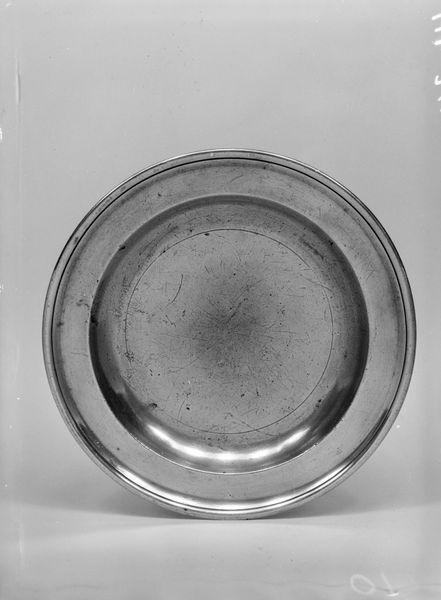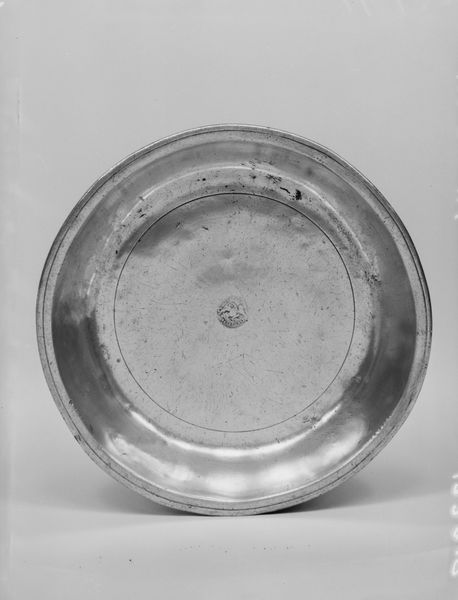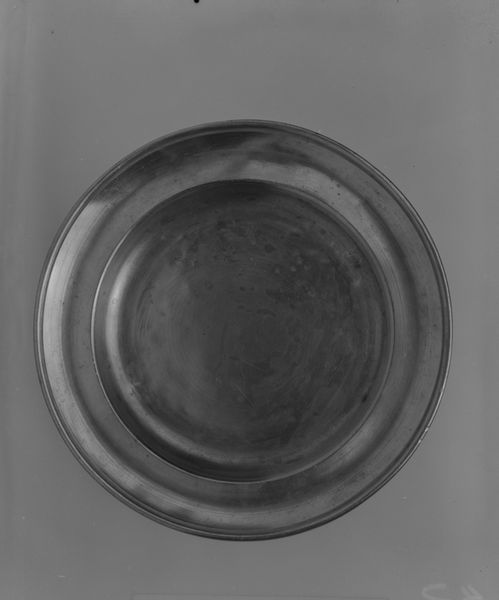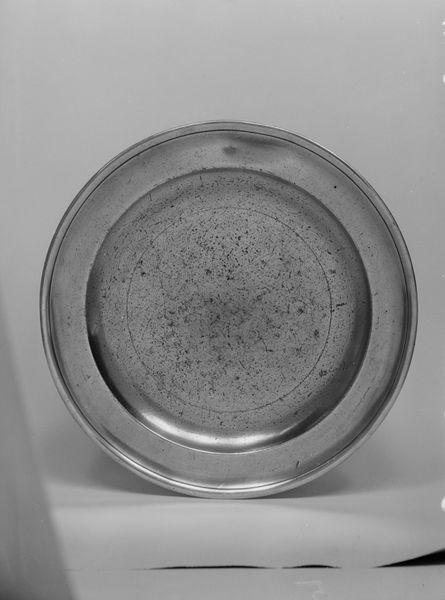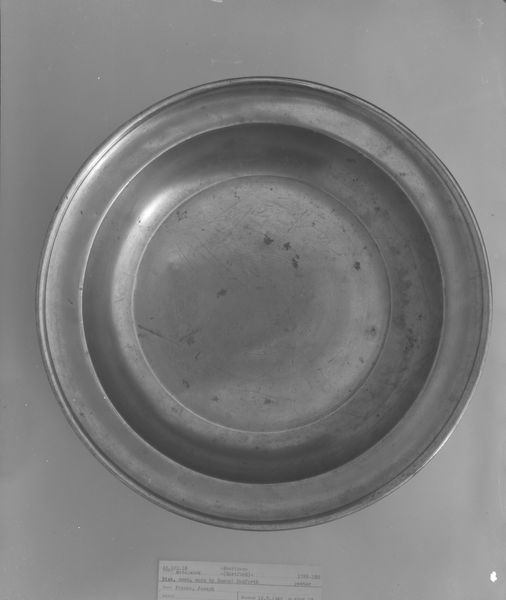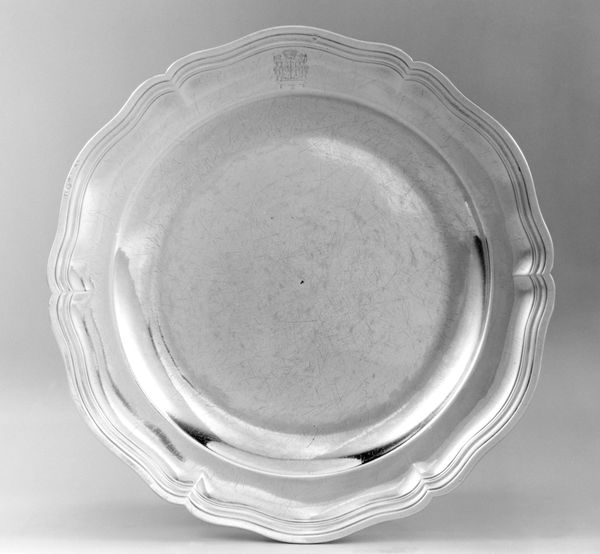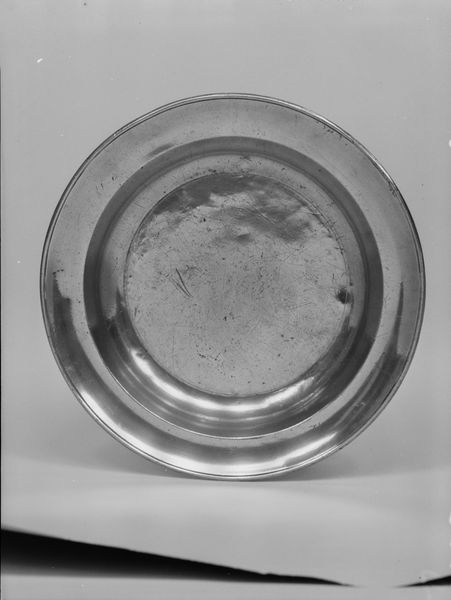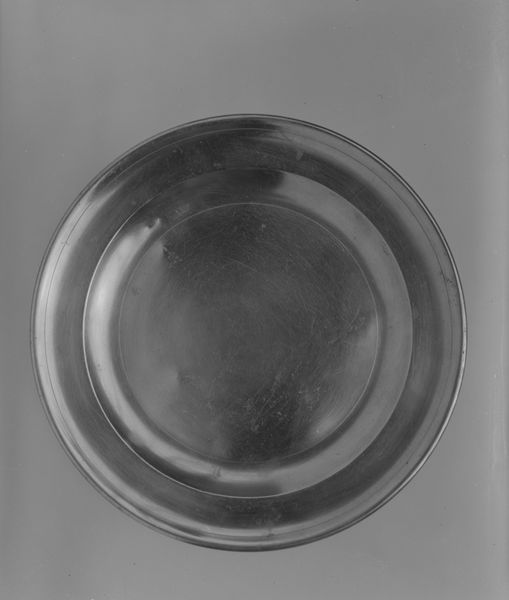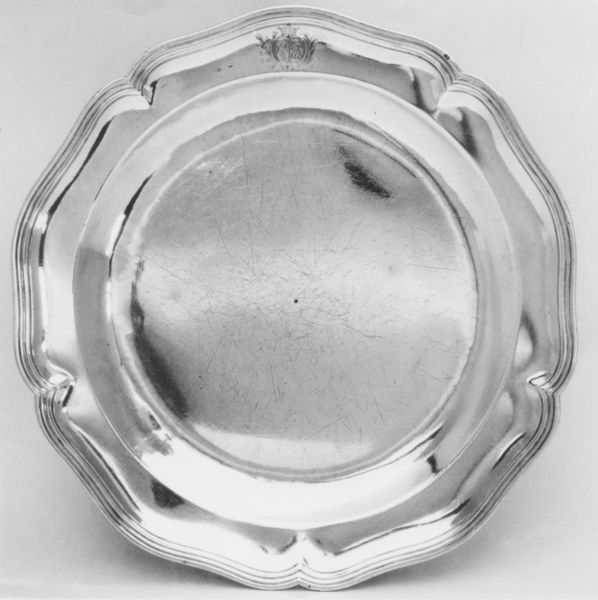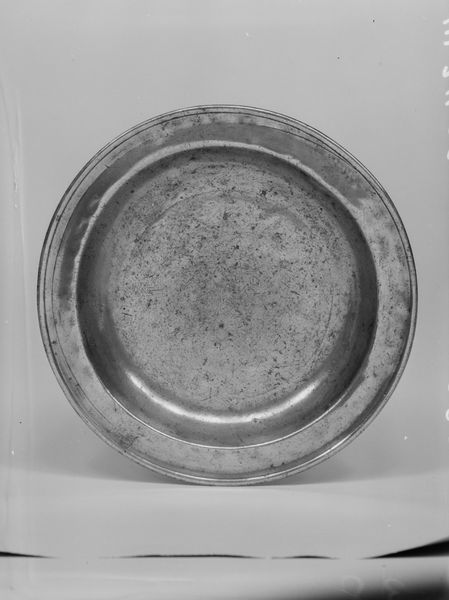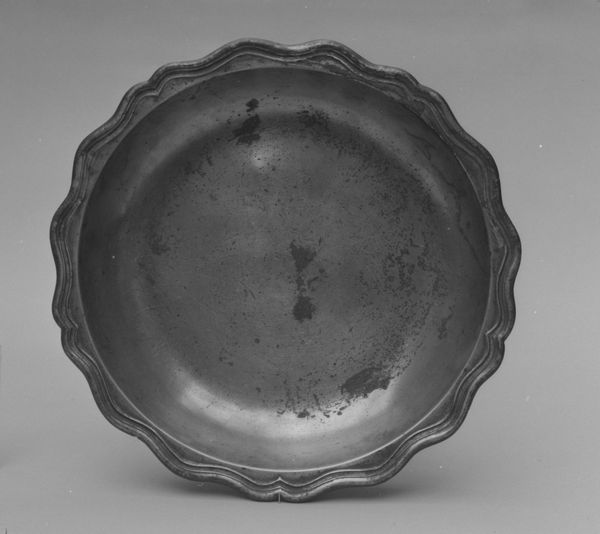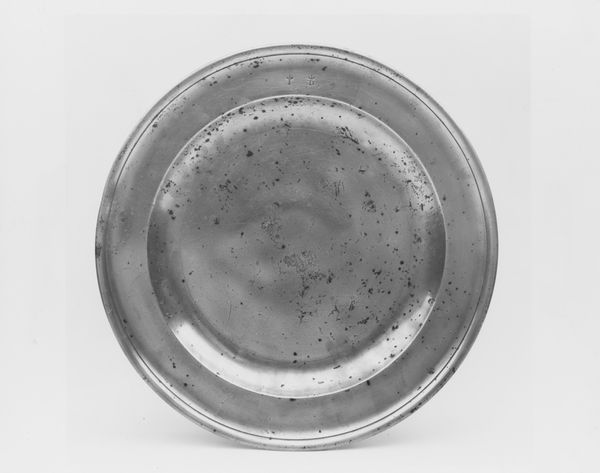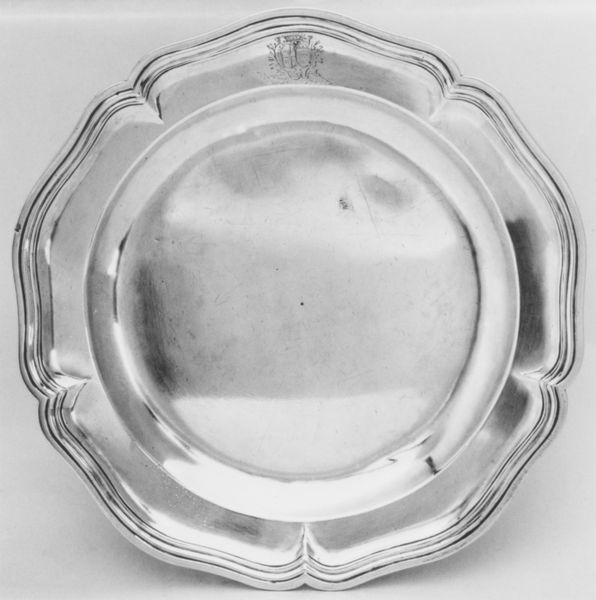
metal
#
metal
#
decorative-art
Dimensions: H. 13/16 in. (2.1 cm); Diam. 12 1/4 in. (31.1 cm)
Copyright: Public Domain
Editor: Here we have "Dish," a metal piece created sometime between 1793 and 1807, currently residing at the Metropolitan Museum of Art. It's striking in its simplicity – almost austere. The monochrome palette and clean, circular lines give it a very minimalist feel. What catches your eye in this seemingly basic piece? Curator: The piece immediately engages through its circular form, a signifier of unity and completion. Note how the artist utilizes concentric circles to draw the eye inward. The subtle variations in the metal’s surface offer textural complexity. Are you drawn to any particular detail? Editor: I'm fascinated by the almost imperceptible imperfections, little dents and scratches. They create a dialogue with the flawless geometry of the circles. Curator: Precisely. The dish, rendered in metal, also speaks to the inherent properties of the material itself – its malleability, its capacity for both reflection and absorption of light. The interplay of light across its surface invites contemplation of form and surface, transcending its function. The dish serves less as a utilitarian object, and more as a meditation on shape, light, and material integrity. How does this formal understanding shape your initial emotional response? Editor: Initially, I saw it as austere. But now I see those subtleties transforming it into something almost poetic. It's a beautiful study in contrasts. Curator: Exactly, considering form, material, light, and imperfection expands the conversation beyond simple utility. What was initially seen as stark becomes quite nuanced and beautiful. Editor: It’s amazing how close formal analysis can shift one’s perception of a piece so drastically! Thanks! Curator: My pleasure.
Comments
No comments
Be the first to comment and join the conversation on the ultimate creative platform.
